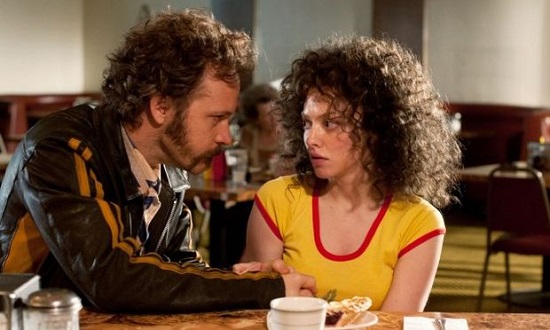“Porno Chic” was how the New York Times described game-changing porn film Deep Throat, following its premiere in 1972. Once the province of the dirty old man and the anorak-clad onanist, the patronage of Truman Capote and Norman Mailer elevated the skin flick’s X rated credentials to arthouse fad, prompting a radical shift in porn demographics. Box office figures soared and the film elicited a storm of cultural and legal debate amongst the American public. At the film’s heart was a previously unknown actress – soon to become the poster girl for the sexual revolution – fawn-eyed, cherry-lipped Linda Lovelace (portrayed in Lovelace by Amanda Seyfried), whose docile character’s sexual frustration is cured by the discovery that her clitoris is lodged at the back of her throat. Directed by a middle-aged beauty-salon owner from Queens, Deep Throat’s implausible premise made for one of the most successful films ever made, grossing $600 million, Of which Linda earned a paltry $1250.
Documentarians Robert Epstein and Jeffrey Friedman’s second feature is a taut, watchable production, rich in period detail. Its washed out grainy finish and shades of lurid avocado setting off its spot-on evocation of be-flared 70s hippydom, disco and static perms. There’s a commendable performance from Amanda Seyfried, and Peter Sarsgaard, who plays her sleaze-ball, violently abusive husband/manager, Chuck, is excellent. As is her dour, emotionally stifled mother Dorothy, played by a barely recognisable Sharon Stone.
Halfway through the previously sunny biopic, the narrative jumps forward six years, and we see a less starry-eyed Linda as she is made to undergo a polygraph test at the request of the publishers of her autobiography. The film then rewinds to give us an alternative account of events: the beatings, rape and exploitative marriage behind the scenes of Linda’s rise to fame. This approach is a valid strategy, but feels forced, part of the anti-porn propaganda play at work. Skirting the darker, seedy underside of the industry.
We first see Linda through a screen of bubbles that conveniently obscure her cuts and bruises. From her naive, prudish beginnings through to her rise, fall and rise again, tragic Linda is never more than a juicy pout; a titillation; a spokesperson for fellatio; a figure tossed from one suppressive clutch to another. Even beaten black and blue she’s a dazzling feat of artifice. We learn next to nothing about female pleasure or the violence of the industry – with even a gang bang scene cast in soft-core glaze. Chuck, who’s always in legal and financial trouble, uses Linda as his get-out-of-jail-free card and profitable enterprise, yet Linda’s own lack of money hardly gets a mention.
There is nothing here of the sexually liberated woman who rose to stand at the forefront of the movement against pornography, alongside Gloria Steinem and Andrea Dworkin, and who commanded a following for attributes other than mastering her gag-reflex. Linda Lovelace wrote four best-selling memoirs, but Epstein and Friedman have based their narrative on the “only authorized biography of Linda Lovelace,” written by some guy called Eric. Some details are illuminated in the film, but many are either elided or in need of a thorough fact-check. Too predictably, the story ends in a neatly resolved Reagan-era flourish of domestic salvation and redemption, with Lovelace embracing a suburban family life. “I am a mother and a wife, that is where I found my joy” is its jarring endnote. It fails to mention that she later divorced again. For all that there is to admire in Lovelace it’s no game changer, begging the question of what another surface-deep biopic adds to an already richly documented chapter of American cultural history.
Lovelace is in cinemas from today


